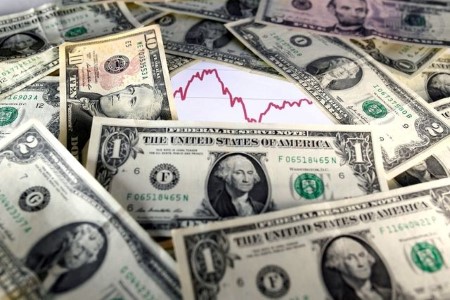




Inflation Update: Green light for easing
 DOWNLOAD
DOWNLOAD

December Economic Update: One for them, one for us
 DOWNLOAD
DOWNLOAD

Philippines Trade Update: Trade trajectories trend along
 DOWNLOAD
DOWNLOAD


FOREX-Dollar at 2-decade high as CPI keeps aggressive U.S. rate hikes likely

By Kevin Buckland
TOKYO, May 12 (Reuters) – The dollar hit a two-decade high on Thursday after U.S. inflation moderated less than markets had expected, keeping the Federal Reserve on course to tighten policy aggressively.
The safe-haven greenback also got support amid a slide in global equities amid investor worries that central banks are behind the curve in trying to rein in consumer prices, with growth already facing risks from China’s prolonged COVID-19 lockdowns.
Riskier currencies like the Aussie and New Zealand dollars sank along with cryptocurrencies.
The dollar index =USD, which measures the buck against six major peers, added about 0.1% to 104.22, hitting its highest since December 2002.
The consumer price index climbed 8.3% on an annual basis in April, easing from 8.5% in March but outstripping the 8.1% estimate of economists. nL2N2X315F
The data suggested inflation may have peaked, but was unlikely to cool quickly and derail the Fed’s current monetary policy plans.
The market is fully priced for at least a half percentage point increase to the policy rate at each of the next two Fed decisions, on June 15 and July 27, according to the CME FedWatch Tool.
“The stronger-than-expected U.S. inflation print heightened concerns over the need for the Fed to accelerate its policy tightening path,” Rodrigo Catril, senior currency strategist at National Australia Bank, wrote in a client note.
The May CPI data comes five days before the June Fed meeting, and another “shocker” would make a 75 basis-point hike then a “strong possibility,” he said.
The euro EUR=EBS was about flat at $1.05095 after receiving a lift overnight as the European Central Bank overnight firmed up expectations that it will raise its policy interest rate in July for the first time in more than a decade.nL5N2X32V5
The single currency plumbed a more than five-year low of $1.04695 at the end of last month.
The yen JPY=EBS continued to garner support from an easing in long-term Treasury yields from a multi-year peak above 3.2% at the start of the week.
Japan’s currency added about 0.2% to 129.67 per dollar, pulling further away from the more than two-decade low of 131.35 reached Monday, as the 10-year Treasury yield US10YT=RR retreated to an almost two-week low of 2.862% in Tokyo trading on Thursday.
The British pound GBP=D3 languished as Brexit headlines returned, with the attorney-general for England and Wales advising the government that it would be within its legal rights to scrap large parts of the Northern Ireland protocol, according to the Times newspaper. nL2N2X336K
Sterling, which also tends to move with risk assets, dipped to $1.2211 on Thursday for the first time in almost two years.
The Aussie AUD=D3 slumped 0.76% to $0.6885 and earlier reached $0.68795 for the first time in almost two years. New Zealand’s kiwi NZD=D3 dropped 0.79% to $0.6240, also an almost two-year low.
Bitcoin BTC=BSTP slid about 8% to $26,645, but stayed above the previous day’s low of $27,757.77, a level not seen since the start of last year.
Smaller rival ether ETH=BTSP was last down almost 14% at 10-month trough of $1,785.
“Risk assets will surely not like (the U.S. CPI data) because it means that it remains far too premature to price out hikes in the fed funds curve,” TD Securities strategists wrote in a research note.
“This market is desperate to try to find the put in risk assets, but this time around, there will be no bailout because central banks are several months too late in tightening.”
World FX rateshttps://tmsnrt.rs/2RBWI5E
(Reporting by Kevin Buckland; Editing by Simon Cameron-Moore and Sam Holmes)
This article originally appeared on reuters.com





 By Reuters
By Reuters